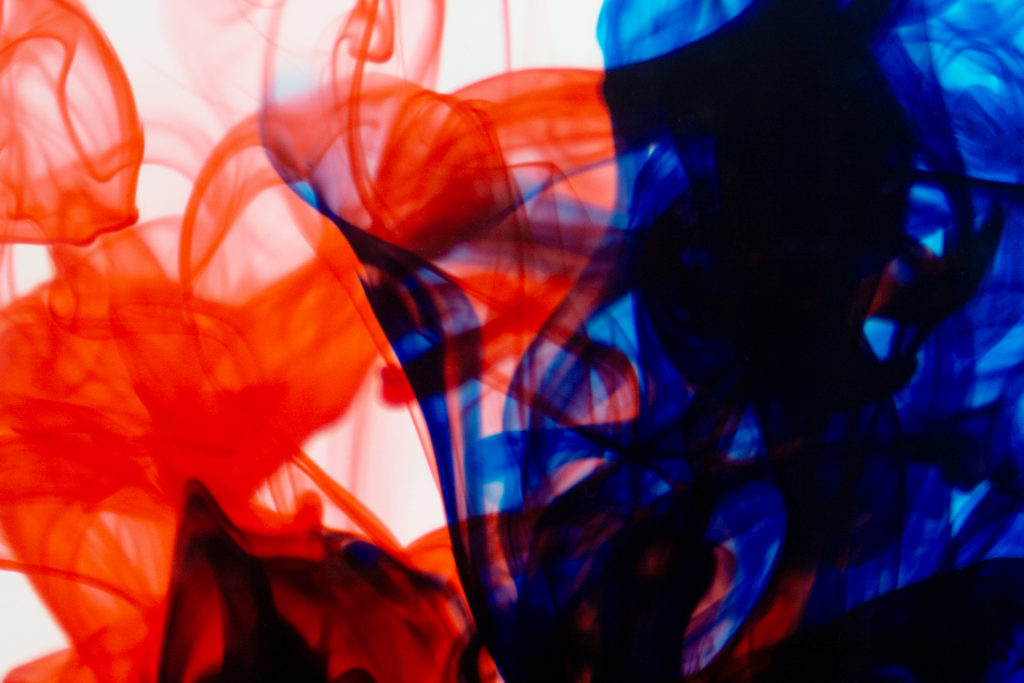Organic design is centered around using nature as your biggest inspiration. It has been around since humans first began making tools, as early humans were working with the forms that nature provided them. Organic design saw a resurgence in the 1930’s through the works of Frank Lloyd Wright(2). He wanted his work to “create harmony between people and nature and regarded architecture as a means of achieving a perfect balance between the man made and natural worlds.”(2) His work was just the beginning of what organic design could become. Although he may not have used smooth curves and organic forms, he saw the potential in bringing nature into his work. The beauty of organic design is that it is not limited by its medium. This aesthetic can be applied to architecture, furniture design, product design, typography and art.

Fallingwater by Frank Lloyd Wright(3)
As modern organic design evolved from Frank Lloyd Wright, its definition broadened. It was not just about achieving harmony between people and nature, but also incorporating natural forms and materials into design. “It often imitates naturally occurring structures such as: cellular, netted, skeletal or crystalline. It leaves behind classical heavy weight-bearing structures and adopts constructions that seem to be more elastic and free. Recurrent methods include flowing lines and soft shapes, asymmetrical construction, plastic volumes and dynamic forms. “(1). This aesthetic was quickly noticed and began to attract attention. Since humans regard nature as beautiful, we tend to think the same of forms and materials that imitate nature.

Voronoi Shelf by Marc Newson(6)
Alvar Aalto, a Finnish designer and Architect, was also applying organic design aesthetic to his work in the 1930’s and 1940’s. His process considered the structural qualities of his material choices(6). Instead of working against his materials, he used them to their advantage. Alvar’s work is what I believe today’s organic design draws a lot of inspiration from.




Alvar Aalto Furniture(4)
As our tools and processes evolved, designers, engineer’s and artists are now able to work with more and more complex forms and materials. This has opened up endless possibilities as to what organic design can. Below is an example of Jang Yong Sun’s work. He has created harmony between nature, people, and technology. I believe this is the next phase in organic design.
.jpg?crc=4162801697)
.jpg?crc=305321389)
Sculpture by Jang Yong Sun(5)
Sources:
- http://www.daevasdesign.com/organic-design/
- http://www.museiitaliani.org/organic-design/
- https://franklloydwright.org/site/fallingwater/
- https://www.aalto.com/aalto-furniture.html
- http://www.j-seon.com/sculpture.html
- https://curiator.com/art/marc-newson/voronoi-shelf


6 Comments. Leave new
I think this type of design came to our lives for a long long time as organic is trending now
There is a good article https://inspirationforhome.com/organic-modern-interior-design/ here I first learnt about Japandi organic style, never heard of it before
Personally, I think “organic design” as defined by people like Frank Lloyd Wright is anything BUT organic. How often in nature do we see long horizontal and vertical rectangles? A better use of the term organic would be found in the wind rows between planted fields, where organic life sets the tone and decides the components and structures found there. Elderberries, Elms, Maples, walnuts, raspberries, dewberries and wild flowers all show up seemingly out of nowhere, from seeds planted by bird droppings and wind. The trees, bushes, and flowers are anything but straight lines.
Thank you, Robert Dixon. My thoughts, as well. Astounded that we are still referencing these early 20th century structural designers as the figureheads of organic design which fundamentally arises from a very different kind of flow based on circles and spirals… those of natural, evolved, elementally interactive forms and energies. With the recent phenomenon of vast cell phone archives of nature photography, the world has unlimited access to visuals of true organic form … whose study is also that ecology applied to any creative process or product
[…] Aesthetic Exploration […]
Organic design is an enthralling aesthetic, especially as it emphasizes the harmony between the natural and the manufactured. The work of Alvar Aalto takes an interesting spin on this aesthetic, focusing not necessarily on the look but on the aspect of nature present in the materials instead. The resultant works don’t fully look natural but are heavily influenced by the natural aspects of how they are built, which is a really cool take on it. You mentioned how there has been a cellular and crystalline take on the aesthetic as well. How do you think the rise of modern technology and scientific methods has influenced some of the modern developments of this aesthetic?
Andre I really like this aesthetic, and I think our modern day world that operates in 3D has opened up endless opportunities for it to be integrated into our daily lives. Are you familiar with generative design software? It’s a branch of solid modeling that runs finite element analysis on functional parts to optimize the design, and many of the designs come out looking like they fit this organic aesthetic.